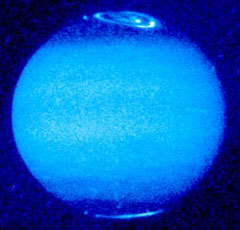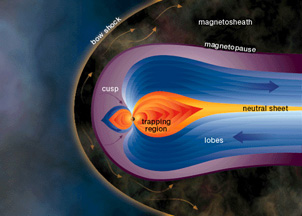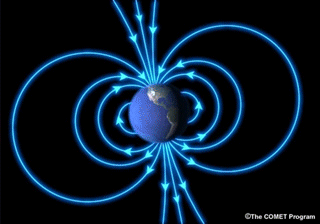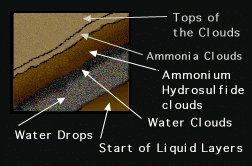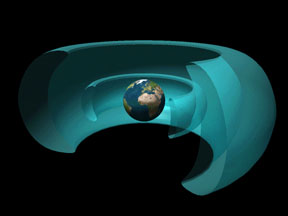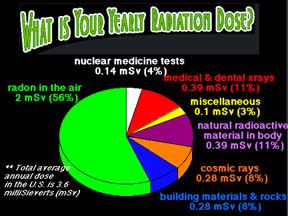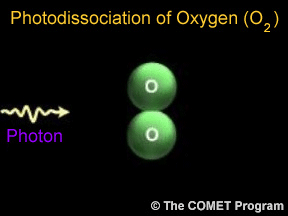Click on image for full size
Image courtesy of J. Clarke and G. Ballester (U. of Michigan), J. Trauger and R. Evans (JPL) and NASA.
The Poles of Jupiter and its Moons
Jupiter has beautiful auroral light shows and other interesting features at its poles. Jupiter has 4 large moons and many smaller ones. Three of the four big moons are covered with ice. They remind us of Earth's polar regions. The fourth big moon is Io. It has volcanoes near its poles!
All planets have an imaginary axis that they spin around. The North and South Poles are the places where that axis pokes through the planet's surface. Some planets are tipped over on their sides. Jupiter isn't. Jupiter is almost perfectly straight up and down. It is only tilted about 3°. Earth is tilted more than 23°. Jupiter's magnetic field is tilted more than its spin axis. Its magnetic field is tilted almost 10°. That's almost the same as Earth... our magnetic field is tilted 11°.
Jupiter spins faster than any other planet in our Solar System. Jupiter is not solid rock like Earth. It is a big ball of gas and liquids. Jupiter's fast spin makes it bulge out at the equator. The diameter of Jupiter at its equator is more than the diameter between the poles.
When radiation particles hit gases in Earth's atmosphere, the atmosphere glows. That's what causes the "Northern Lights" (also called the aurora). Jupiter has aurora too. They form over both poles of Jupiter. Radiation at Jupiter's poles also affects Jupiter's atmosphere. It causes chemical reactions that change gases in the atmosphere. Some of the gases get turned into a haze near Jupiter's poles.
Earth is cold near the poles and hot near the equator. Jupiter is about the same temperature all over. That's because most of its heat comes from inside Jupiter instead of from sunlight. The poles of Jupiter are just as warm as the equator!


